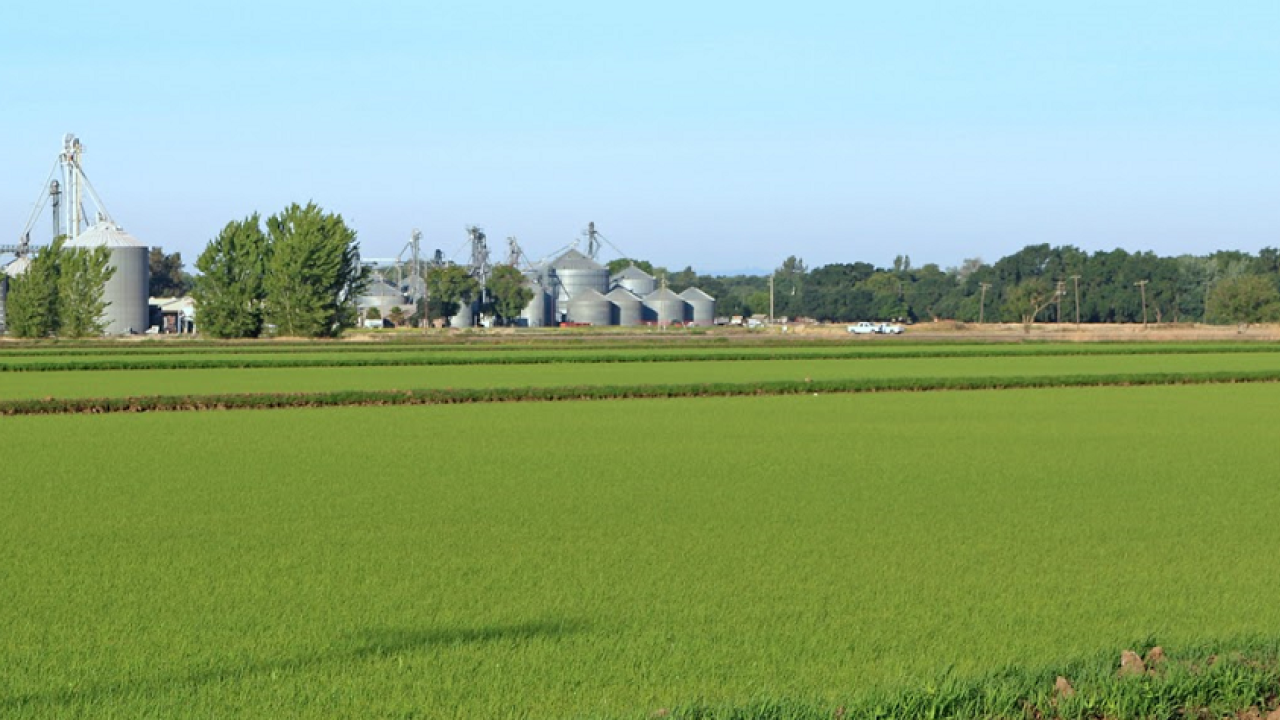
How to Manage Nitrogen Fertilizer on Rice When It Rains During Planting
Rain in May, especially in the amounts we have seen this year, is far from ideal for rice growers. It makes establishing seedlings, nitrogen (N) management, and weed control extra challenging. Rain in May is not new. In 1995, 1996, 1998, and 2005, average May rainfall in the Sacramento Valley was 2.3 inches and average statewide yields of those years was 73 sacks/ac. Interestingly, in 2011 the Sacramento Valley also received about 2 inches in May, but yields were 83.5 sacks. Statewide yields over the last 10 years have averaged about 85 sacks/ac.

Here I want to address some nitrogen management concerns. I address three potential scenarios below and some ideas on how to best manage N fertilizer.
Scenario 1. I applied aqua-N before rain to all or part of my field but was not able to get field flooded before the rains.
Aqua-N that was applied before the rain and did not get flooded will be very susceptible to losses. Since the soil became wet (but not flooded), the aqua-N fertilizer will begin to convert to nitrate (NO3) which will be lost to the atmosphere (via denitrification) when the field gets flooded. How much is lost? Well, it is a bit of a guess but some early research suggests that you lose about 2 lb N/ac per day when the field is not flooded. Therefore, if the field received aqua and it was wet for 10 days before flooding, about 20 lb N/ac was lost which will need to be made up later in the season. This is a rough estimate and you should evaluate using a Leaf Color Chart (LCC) for rice, or GreenSeeker at panicle initiation (45–50 days after planting). If you see the field yellowing before panicle initiation you should think about adding more N when you see the yellowing.
Scenario 2. I decided not to apply aqua but just go ahead and flood field when the rains started.
In this situation, I believe the best approach is to apply your N around two weeks after planting. The N fertilizer should be applied when water is not flowing within the field. The reason to apply at around two weeks is that before this time, the plant takes up very little nitrogen fertilizer. It really needs it starting around three weeks.

If you plan to keep the field flooded, apply the full amount of N at this stage. As far as N source, urea is a better choice than ammonium sulfate as it will move more easily into the soil. Ammonium will tend to stay at the surface where there is greater chances of losses. Therefore, apply the highest amount of N as urea as possible. You will also need to apply starter fertilizers around this time. Again, assess the crop at panicle initiation to see if more fertilizer N is needed.
Scenario 3. I did not apply aqua or flood my field before the rains
In this situation, you will likely be applying aqua-N into a soil that is wetter than normal. Usually it is applied when the soil is dry and the aqua-N is relatively stable for a while (we recommend having field completely flooded within 10 days of application). In a wet soil, the nitrogen will start to convert to nitrate relatively soon (see explanation in scenario 1). Therefore, to minimize N losses, flood the field as soon as possible after applying aqua.
(Article by Bruce Linquist, faculty member and Cooperative Extension specialist in the Department of Plant Sciences, UC Davis. Re-posted from UC Rice Blog.)
